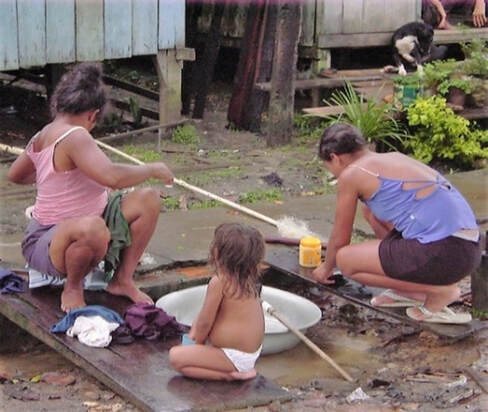Diagnosing and treating leprosy by boat
Due to the stigma of being called "a leper", a law was passed in Brazil in 1995, ruling that leprosy should always be referred to by its scientific name, Hansen’s Disease. Despite this ruling, the individuals below have asked not to be identified in any photographs and we have used acronyms instead of their real names.
The Ipiranga Committee Association, led by Doctor Antonia Lopez Gonzalez, known as Dr Tony, operates in the River Purus area. Dr Tony's team is fighting leprosy, with hundreds of cases diagnosed each year.
Many people with leprosy live in rural areas where access to medical facilities is scarce. The team, supported by SFLG, reaches people that otherwise could not be found, by navigating along the Purus River in a hospital boat.
Update
Due to the stigma of being called "a leper", a law was passed in Brazil in 1995, ruling that leprosy should always be referred to by its scientific name, Hansen’s Disease. Despite this ruling, the individuals below have asked not to be identified in any photographs and we have used acronyms instead of their real names.
The Ipiranga Committee Association, led by Doctor Antonia Lopez Gonzalez, known as Dr Tony, operates in the River Purus area. Dr Tony's team is fighting leprosy, with hundreds of cases diagnosed each year.
Many people with leprosy live in rural areas where access to medical facilities is scarce. The team, supported by SFLG, reaches people that otherwise could not be found, by navigating along the Purus River in a hospital boat.
Update
Carlos (22, lives at home in the Purus River area, Amazon.)
|
Carlos was only 10 years old when he became worried about his fingers. He lived in a rural area with his family, with little access to medical care. He hid his symptoms from his family as he had been in contact with people with leprosy. There was no regular school, and Carlos instead helped his family to obtain food and water. He had pain in his arms and fingers then his little fingers became atrophied (meaning that they could not move). His symptoms were discovered during a routine check up visit, and he was diagnosed with leprosy.
Carlos was frightened that his fingers would have to be removed and that he would be rejected by others. But he was given both treatment and physiotherapy by Dr Tony and her team, and crucially enrolled in school. Therefore he could be educated and build a future for himself. Carlos stayed in the centre for about four years, and still they bring food to his home. They also provide moral support and self care advice. Without them, Carlos says “I would have lost my fingers and hidden in the forest and disappeared for fear of rejection”. Now, Carlos simply wants to take care of his family. |
Hansen's Disease has a cure!
Adriana (25, lives at home in the Purus River area, Amazon.)
|
At 16 years old, Adriana was married and pregnant with her first child. She developed lumpy patches on her legs, a fever and frequent fatigue. During a home medical visit, a skin examination revealed it was leprosy and she went to the hospital to begin treatment. Adriana had some bad leprosy reactions to the treatment at first and feared losing her baby. It was a huge relief when she had a successful birth, and her first daughter was born unaffected by the treatment Adriana had had.
During the first two years of treatment, Adriana received weekly home visits and baskets of food from the team. They still support her with food and self-care. Without them, Adriana simply states that she would have lost her daughter. And now, she wants to care for her family, and give back by helping the leprosy programme. |
That it (Hansen’s Disease) has a cure, and that we do not have to be rejected”
Joao (77, at home in Purus River area, Amazon.)
|
At 12 years old, Joao was living with his family and working as a rubber worker. He developed marks all over his skin and numbness in his hands and feet. A local shaman dismissed the symptoms as evil and said nothing could be done.
Over the years, Joao's leprosy symptoms worsened. he numbness in his hands and feet meant that Joao could not feel any pain caused by accidental wounds and damage. Eventually ulcers developed that would not heal. One day he received a visit from someone from the leprosy programme and he was given treatment in a hospital in Porto Velho following diagnosis. Tragically, he had to have his legs and hands amputated. The hospital provided Joao with artificial legs, but he did not like them and decide to return to his home and live alone. But Dr Tony’s team visited him and provided orthopaedic aids for him. He still receives regular visits, and the centre provides basic food and self-care advice. |
“Hansen’s Disease has a cure”






